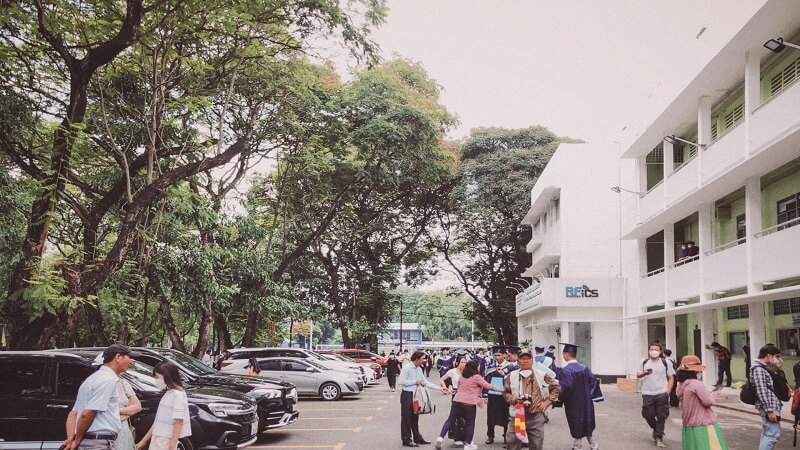Parking lot design is often overlooked in school planning, yet it plays a crucial role in keeping students safe. A poorly designed parking lot can become a hazardous area, especially during busy drop-off and pick-up times when cars, buses, and pedestrians are all moving at once. Without careful planning, these areas can become chaotic, increasing the likelihood of accidents. The risks associated with inadequate parking lot layouts go far beyond inconvenience—they can put children in harm’s way.
Why School Parking Lot Safety Matters
Every day, students walk through parking lots to enter and leave school. These areas are constantly filled with activity, as buses, parents, staff, and visitors navigate them. If a parking lot is not designed properly, it can become a high-risk environment for pedestrians, particularly young children who may not always be aware of the dangers around them.
One of the biggest hazards in poorly planned lots is the lack of separation between vehicles and pedestrians. In many cases, pedestrian walkways are either missing or not clearly marked, forcing children to cross through traffic. Because young students are small and unpredictable in their movements, they can be difficult for drivers to see, especially in blind spots or when visibility is low. If a driver is distracted or in a rush, the consequences can be devastating.
The Risks of Congestion
Traffic congestion is another major issue in school parking lots. During peak hours, a surge of vehicles can lead to gridlock, with parents struggling to find parking spots and buses trying to maneuver through tight spaces. When there are not enough designated drop-off and pick-up zones, some parents may park in unauthorized or unsafe areas, such as bus lanes or fire lanes, further complicating traffic flow.
Frustration and impatience often lead to unsafe driving behaviors, such as speeding, ignoring crosswalks, or making sudden turns. Without a well-organized traffic flow, confusion increases, making it more likely for a pedestrian-vehicle accident to occur.
The Need for Clear Signage and Organized Traffic Flow
A well-designed school parking lot should have clear signage and defined pathways for both vehicles and pedestrians. Unfortunately, many school lots lack these basic safety features. Without clearly marked crosswalks, directional signs, and stop points, both drivers and pedestrians may be unsure of where to go, increasing the risk of accidents.
Additionally, when there is no structured traffic flow, vehicles may move unpredictably, creating bottlenecks or forcing pedestrians to walk through dangerous areas. Establishing designated drop-off and pick-up zones, along with enforcing traffic direction rules, can greatly improve safety.
Poor Lighting and Limited Visibility
Inadequate lighting is another serious safety issue in school parking lots. Many lots are not well-lit, making it difficult for drivers to see pedestrians, especially in the early morning or late afternoon when children are arriving or leaving school. This lack of visibility is particularly dangerous for younger children, who are smaller and harder to spot in dim conditions.
Beyond pedestrian safety, poor lighting can also pose security risks. Dark parking areas can attract crime, making students and staff feel unsafe. Installing proper lighting can not only prevent accidents but also create a more secure environment for everyone on campus.
Steps to Improve School Parking Lot Safety
To enhance safety, schools need to invest in better parking lot design and maintenance. Separating pedestrian walkways from vehicle lanes, adding clear signage, and enforcing structured traffic patterns can significantly reduce risks. Additionally, implementing modern safety measures—such as security cameras and vehicle sensors—can help monitor parking lot activity and improve overall security.
Regular maintenance is also essential. Cracked pavement, faded markings, and damaged signs can contribute to confusion and accidents. Schools should prioritize routine inspections and upgrades to ensure their parking lots remain safe and functional.
Even small improvements can make a difference. For example, placing outside trash cans in designated areas can help keep walkways clear of debris, preventing unnecessary obstacles and promoting a cleaner, more organized space.
Conclusion
The safety of schoolchildren should always be a top priority, and parking lot design is a key factor in ensuring their well-being. Poorly planned lots create unnecessary risks, from traffic congestion to pedestrian dangers. By investing in better design, clear signage, sufficient lighting, and ongoing maintenance, schools can significantly improve safety for students, staff, and visitors. Addressing these issues now can help prevent accidents and create a safer school environment for everyone.

